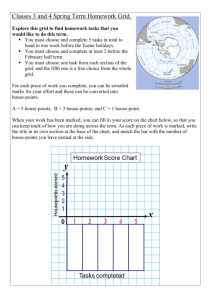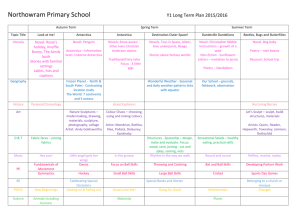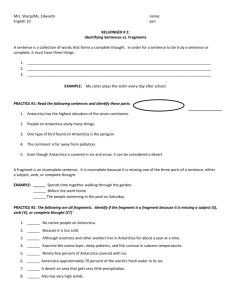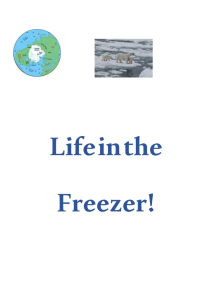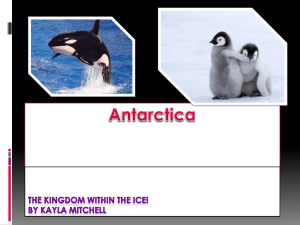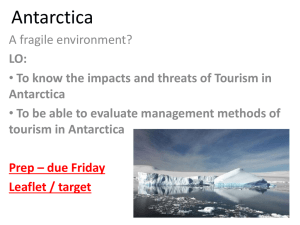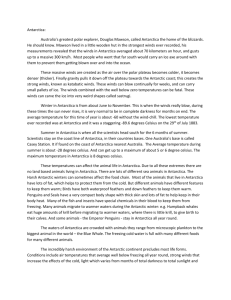Year 7 Geography homework
advertisement
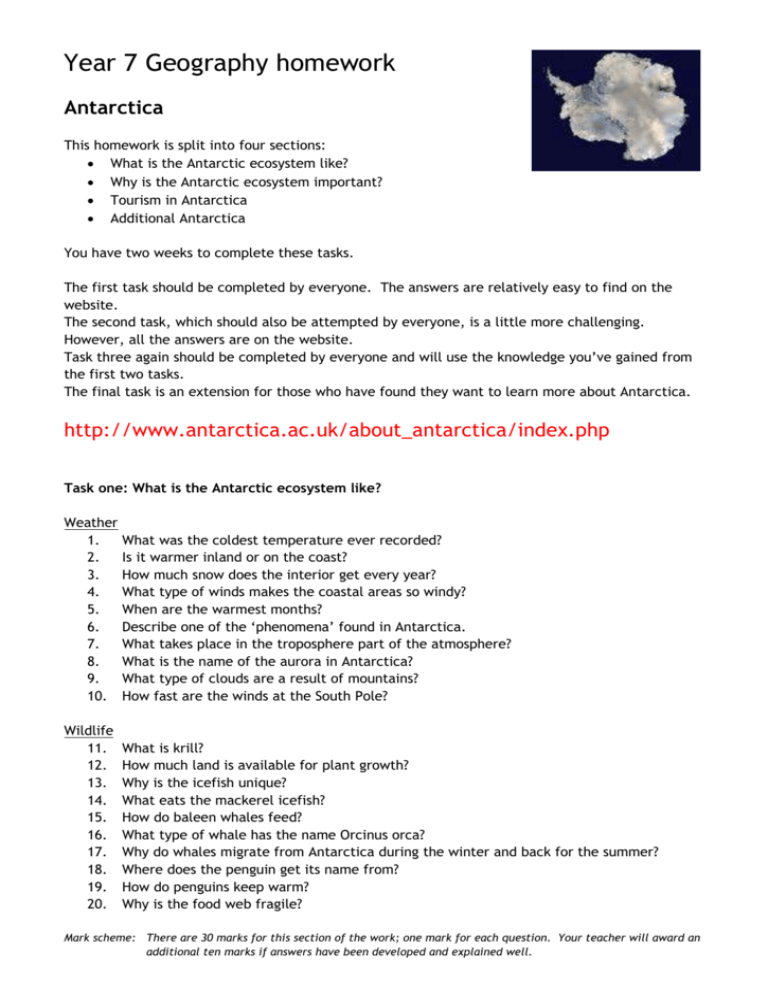
Year 7 Geography homework Antarctica This homework is split into four sections: What is the Antarctic ecosystem like? Why is the Antarctic ecosystem important? Tourism in Antarctica Additional Antarctica You have two weeks to complete these tasks. The first task should be completed by everyone. The answers are relatively easy to find on the website. The second task, which should also be attempted by everyone, is a little more challenging. However, all the answers are on the website. Task three again should be completed by everyone and will use the knowledge you’ve gained from the first two tasks. The final task is an extension for those who have found they want to learn more about Antarctica. http://www.antarctica.ac.uk/about_antarctica/index.php Task one: What is the Antarctic ecosystem like? Weather 1. What was the coldest temperature ever recorded? 2. Is it warmer inland or on the coast? 3. How much snow does the interior get every year? 4. What type of winds makes the coastal areas so windy? 5. When are the warmest months? 6. Describe one of the ‘phenomena’ found in Antarctica. 7. What takes place in the troposphere part of the atmosphere? 8. What is the name of the aurora in Antarctica? 9. What type of clouds are a result of mountains? 10. How fast are the winds at the South Pole? Wildlife 11. 12. 13. 14. 15. 16. 17. 18. 19. 20. What is krill? How much land is available for plant growth? Why is the icefish unique? What eats the mackerel icefish? How do baleen whales feed? What type of whale has the name Orcinus orca? Why do whales migrate from Antarctica during the winter and back for the summer? Where does the penguin get its name from? How do penguins keep warm? Why is the food web fragile? Mark scheme: There are 30 marks for this section of the work; one mark for each question. Your teacher will award an additional ten marks if answers have been developed and explained well. Task two: Why is the Antarctic ecosystem important? Environment 1. How many scientists work in Antarctica during the summer? 2. Which country was the first to sign the Antarctic Treaty? 3. What types of waste are not removed? 4. What are ASPAs and ASMAs? 5. Identify three reasons why it is important to protect Antarctica. 6. How is the Antarctic environment protected? Politics 7. What is the Antarctic Treaty? 8. Outline the CCAMLR. Mark scheme: There are 20 marks for this section of the work. Questions 1-5 are worth one mark each, the other three need extended answers; your teacher has 15 marks to award here. Task three: Tourism in Antarctica Using what you have learnt so far, and any other knowledge you may have about Antarctica, you are to produce a tourist poster for Antarctica. You need to consider the following: What does Antarctica have to offer tourists? What activities can tourist expect to experience whilst in Antarctica? What can tourists expect to see whilst they are in Antarctica? What should tourists take with them (clothing)? What rules should tourist stick to? Your poster should be on A4 paper and needs to be eye-catching and well presented. Mark scheme: There are 30 marks for this section of the work; five marks for each of the sections above and a further five marks for the quality of your presentation. Task four: Additional Antarctica Research into: What happen to both Antarctica and the whole world if all the ice on Antarctica melted? What did Shackleton do to save his crew? Mark scheme: These two activities have ten marks each and will enable you to access the higher levels. You must do all the other activities before you attempt these. PLTS Independent enquirers – analyse and evaluate information, judging its relevance and value. Self manager – organise time and resources, prioritising actions. Extra Why not watch ‘March of the Penguins’ and try to identify the different parts of the ecosystem. Here’s a clip: http://www.youtube.com/watch?v=MB_GisVFboU


